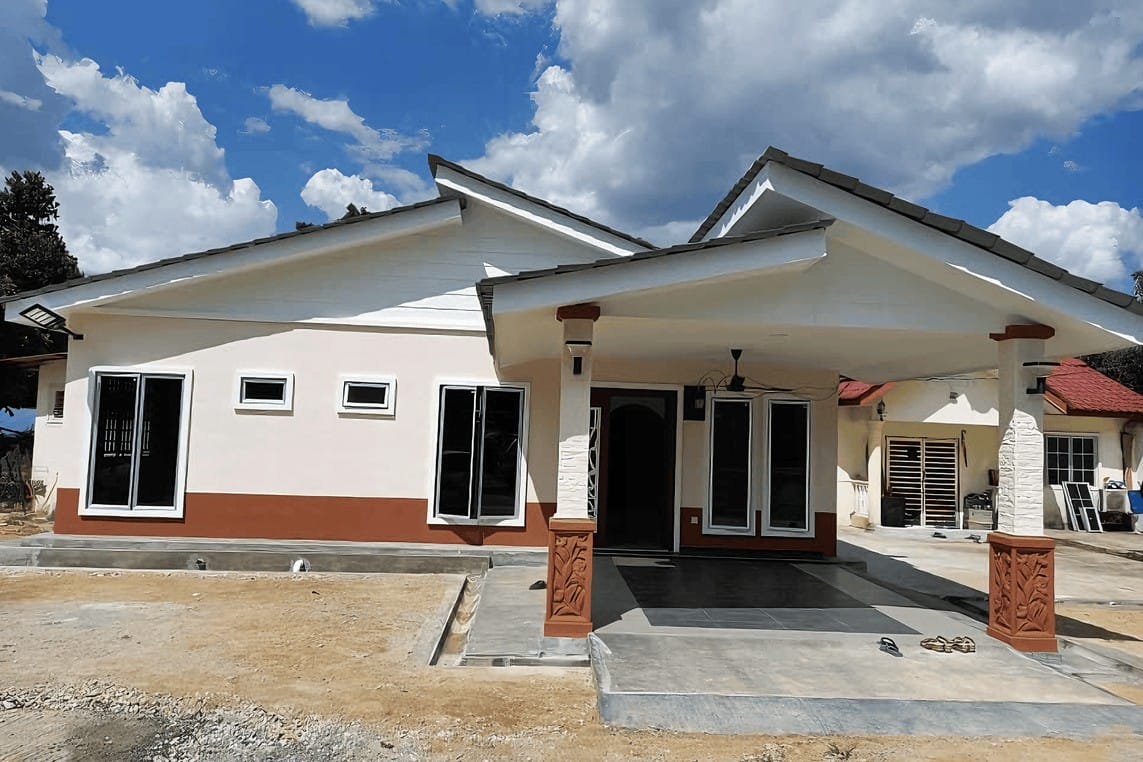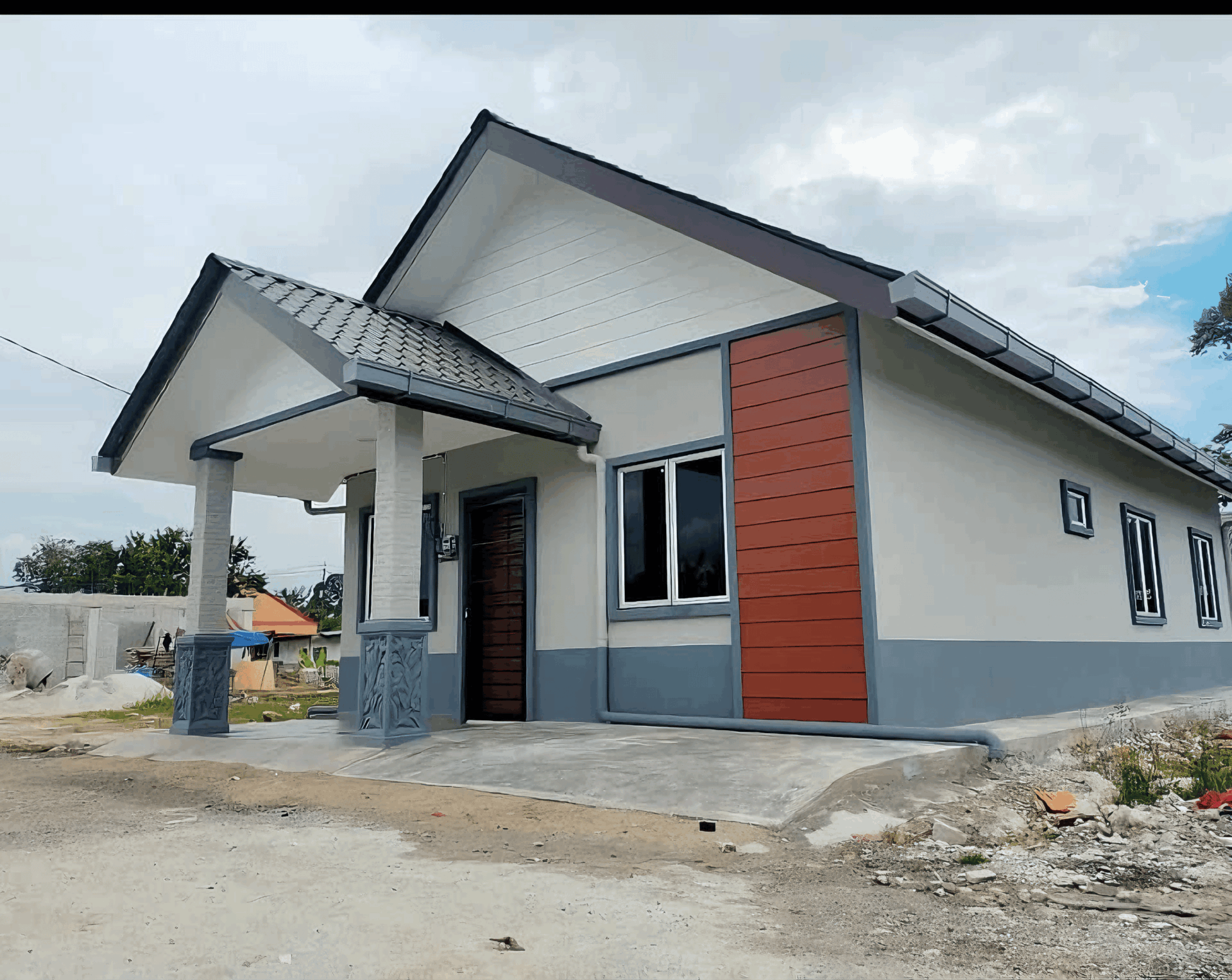5 Genius Ways to Tap into Government Incentives for Your Construction Project | RumahHQ

Hey there, construction enthusiasts! Are you gearing up for your next building project? Whether you’re a seasoned contractor or a first-time developer, you might want to pay attention to what’s going on with government incentives. That’s right! The Malaysian government is rolling out various schemes designed to boost the construction industry, and these incentives can be game-changers for your budget. Curious about how to take advantage of these opportunities? In this article, we’re diving into five genius ways to tap into government support for your construction endeavors. Let’s explore how you can save some serious cash while bringing your dream project to life! Ready? Let’s get started!
Understanding the Landscape of Government Incentives for Construction
When diving into the world of government incentives for construction, it’s crucial to know what’s available and how to make the most of it. From tax deductions to grants, understanding the various programs can give your project a substantial financial boost. Additionally, different states and federal bodies often provide their own incentives, tailored to specific projects or objectives. Make sure to research and familiarize yourself with local government initiatives, as they can frequently change or have specific eligibility requirements.
Here are some key types of incentives you might encounter:
- Tax Credits: These reduce your tax liability, making it easier to budget for your construction needs.
- Grants: Non-repayable funds that can provide significant support for your project.
- Subsidized Loans: Low-interest loans that lessen the cost burden and allow for better cash flow management.
It’s also important to engage with local agencies and industry networks, as they often share valuable insights and updates about upcoming incentives. Consider taking part in workshops or seminars that focus on government funding opportunities—these events can be excellent for networking. Plus, tapping into online platforms that compile available government programs can save time and help you quickly identify which incentives best suit your construction project.

Identifying Eligibility Criteria for Maximum Benefits
Understanding the eligibility criteria is crucial to unlocking the maximum benefits available for your construction project. Various government incentives, such as grants and tax rebates, often come with specific requirements. These can include factors like project size, location, and the use of sustainable materials. To ensure you don’t miss out, carefully review your project details against these criteria.
Here are some key aspects you should consider:
- Project Scale: Larger projects often qualify for bigger incentives.
- Geographic Location: Certain areas might offer more advantages, especially in less developed regions.
- Sustainability Practices: Incorporating green technologies can enhance your eligibility.
- Employment Generation: Projects that create job opportunities may receive additional perks.
To simplify things, creating a quick checklist can help you assess your eligibility faster. Here’s a sample overview of potential benefits based on different criteria:
| Eligibility Criteria | Potential Benefits |
|---|---|
| Location in Designated Areas | Higher funding grants |
| Utilizing Local Materials | Tax incentives |
| Commitment to Sustainable Practices | Additional rebates |
| Job Creation | Bonus funding |

Leveraging Tax Credits to Offset Project Costs
Tax credits can be a game changer when it comes to managing the financial aspects of your construction project. By understanding the various tax incentives available, you can significantly lower your project costs. Many local and federal programs offer tax credits specifically for energy-efficient construction methods, sustainable materials, and job creation. So, don’t just focus on the immediate costs; think strategically about how these credits can position you for long-term savings and growth.
Here are some types of tax credits you may want to explore:
- Green Building Credits: These are available for projects that prioritize eco-friendly practices and materials.
- Investment Tax Credit (ITC): This is particularly useful for renewable energy projects, allowing developers to deduct a percentage of their investment in solar or wind technologies.
- Job Creation Tax Credits: These incentives reward you for hiring local talent, which not only benefits your community but also improves your bottom line.
To keep track of your potential savings, it helps to have a clear overview of how these tax credits could affect your project’s budget. Below is a simple table to illustrate potential tax credits based on project types:
| Project Type | Potential Tax Credit |
|---|---|
| Solar Panel Installation | 30% of installation costs |
| Energy-Efficient Building | Up to RM10,000 per unit |
| Local Job Creation | RM5,000 per new hire |
Maximizing your tax credits starts with doing your homework. Consult with a tax professional who understands the nuances of construction projects and can guide you toward the incentives that align with your goals. By closely monitoring these incentives throughout your project timeline, you can ensure that you’re not leaving money on the table.

Accessing Grants and Funding Opportunities for Innovative Projects
Finding the right financial backing for your construction project can sometimes feel like searching for a needle in a haystack. But the good news? There are plenty of government incentives just waiting to be discovered! Start by diving into government databases where numerous grants and funding opportunities are listed. These platforms often update their offers and criteria, so make it a habit to check them regularly. Keep your eyes peeled for programs that support innovative practices, sustainable building solutions, or technology integration in construction.
Networking can open up a world of possibilities too. Engaging with industry groups or associations isn’t just about making contacts; it can lead you to exclusive funding opportunities that might not be widely advertised. Attend trade shows, seminars, or workshops where you can meet government representatives and other stakeholders. You’ll be surprised at how many insights and connections arise from casual conversations. Don’t forget to exchange details and maintain those connections, as a simple chat can lead you to the funding you need!
| Funding Source | Type of Support | Key Eligibility |
|---|---|---|
| Malaysia’s Construction Fund | Grant | Innovative technology solutions |
| Green Building Incentives | Tax relief | Sustainable building materials |
| Local Council Infrastructure Fund | Loan | Community benefit projects |
Last but not least, consider collaborating with research institutions or universities. Many education bodies offer funding opportunities for projects that align with their research goals. By joining forces with these organizations, you not only enhance your project’s credibility but also gain access to specialized resources and expertise that can make your application stand out. Plus, collaborations often come with networking benefits that can connect you with other potential funders!

Navigating Local and State Incentive Programs Effectively
Understanding the ins and outs of local and state incentive programs can feel like navigating a maze, but it’s easier than you might think. First off, do your research! Dive into government websites and talk to local agencies. They often have resources available to help you decipher the various programs. Don’t skip out on community forums and social media groups where other builders share their experiences. This kind of local intel is gold, and it can guide you toward the specific incentives that align with your project.
Next, make connections! Networking isn’t just for industry events. Reach out to local government representatives or program administrators who know the landscape. Attend workshops or seminars where they present the programs and share success stories. Building these relationships can be a game changer, especially when it comes to understanding eligibility requirements and the application processes. Often, those in the know can provide you with insights that aren’t publicized, giving you an edge in securing the incentives.
| Incentive Program Type | Eligible Projects | Application Tips |
|---|---|---|
| Tax Credits | Renewable Energy, Green Buildings | Gather Documentation: Keep records of all expenses and project details. |
| Grants | Community Development, Technology Upgrades | Craft a Solid Proposal: Clearly outline the project benefits in your application. |
| Subsidies | Affordable Housing, Infrastructure Improvements | Stay Updated: Frequent visits to agency websites for new funding announcements. |
Lastly, don’t be afraid to ask for help. There are consultants and advisory services dedicated to helping builders navigate these programs, and they can be worth the investment. They can help streamline your process, ensuring you don’t miss out on incentives due to miscommunication or a poorly filled application. Remember, the world of government incentives can be complex, but with the right tools and contacts, you can make the process work for you and your construction project!

Building Partnerships with Government Agencies
Forging alliances with government agencies is essential for unlocking the plethora of incentives available to construction projects. Collaborating with local authorities can provide you with vital resources and insights, enabling you to navigate the bureaucratic landscape with ease. By establishing strong connections, you can stay informed about new grants, subsidies, and programs tailored to boost the construction sector, ensuring your project benefits fully from these opportunities.
One effective strategy is to attend governmental workshops, seminars, or exhibitions related to construction and development. Not only do these events offer valuable information on current funding options, but they also serve as an excellent platform for networking. Through engaging discussions, you can build lasting relationships with key officials and other stakeholders who share your interests. This rapport could lead to collaborative projects down the line, giving your construction endeavors an edge over the competition.
Additionally, consider forming partnerships with local trade associations that have established connections with government bodies. These organizations often have resources and expertise to help you leverage available incentives, such as:
- Tax breaks for energy-efficient projects
- Subsidized training programs for workers
- Grants for innovative construction methods
By connecting with these associations, you can gain insights into navigating funding applications, ensuring you don’t miss out on beneficial opportunities to save costs and enhance your project’s viability.

Developing a Strategic Plan for Incentive Utilization
Crafting an effective approach to leverage government incentives for your construction project can be a game changer. Start by thoroughly researching available incentives, which can include tax breaks, grants, and subsidies specifically tailored for the construction industry in Malaysia. This step ensures you have a solid understanding of what the government offers and how these incentives align with your project goals. Utilize online resources like government websites and local business forums to stay updated on any new or modified incentives that could benefit your project.
Next, consider developing a collaborative strategy involving your project team, financial advisors, and legal experts. By pooling knowledge and resources, you can identify the most advantageous incentives and make a compelling case for their utilization. It’s essential to outline your project timelines, budget forecasts, and compliance needs clearly in this collaborative effort. This not only keeps everyone aligned but also establishes a road map to maximize these financial benefits without missing any critical steps.
Lastly, don’t underestimate the power of networking and relationship-building. Engage with industry associations, attend workshops, and connect with local government representatives. Building rapport with key stakeholders can lead to insider knowledge on upcoming incentive programs or special initiatives that aren’t widely advertised. Creating a supportive network can provide valuable insights and may even open doors to partnerships that enhance your access to government incentives.

Monitoring and Reporting to Sustain Compliance and Support
To truly benefit from government incentives in your construction project, it’s essential to keep a close eye on your compliance measures. Regular monitoring allows you to stay ahead of potential issues, ensuring you meet all necessary requirements to qualify for grants and subsidies. This can include tracking documentation, assessing your project’s impact, and verifying alignment with government regulations. By being proactive, you can effectively safeguard your project’s funding and resources.
Establishing a robust reporting system is equally crucial. This system should streamline the process of gathering and presenting data related to your project’s milestones and compliance benchmarks. Use tools or software solutions that can help automate the gathering of critical information, making it easier to compile reports for stakeholders or government bodies. A clear and consistent reporting schedule not only keeps your project on track but also demonstrates your commitment to transparency and accountability, which can work in your favor when applying for future incentives.
Incorporating feedback loops based on your monitoring and reporting can create a more dynamic approach to managing compliance. This involves actively seeking input from team members and stakeholders regarding safety, efficiency, and adherence to standards. Here are a few ideas for feedback mechanisms:
- Weekly Team Meetings – Discuss ongoing compliance efforts and address potential challenges.
- Anonymous Surveys – Gather insights about processes and challenges without any biases.
- Performance Dashboards – Visualize compliance status in real-time to facilitate quick decision-making.
Key Takeaways
And there you have it! Tapping into government incentives for your construction projects doesn’t have to be a daunting task. Whether it’s harnessing green building grants, exploring tax rebates, or diving into local development programs, there are plenty of opportunities just waiting for you to grab them.
Remember, staying informed and proactive is key. The more you know about what’s out there, the better you can position your project for success. So, roll up those sleeves and start exploring the ways these incentives can lighten your financial load and boost your project’s potential!
Who knows? With the right strategy, you might just unlock the hidden treasures the government has to offer. Happy constructing, and may your projects reach new heights!











